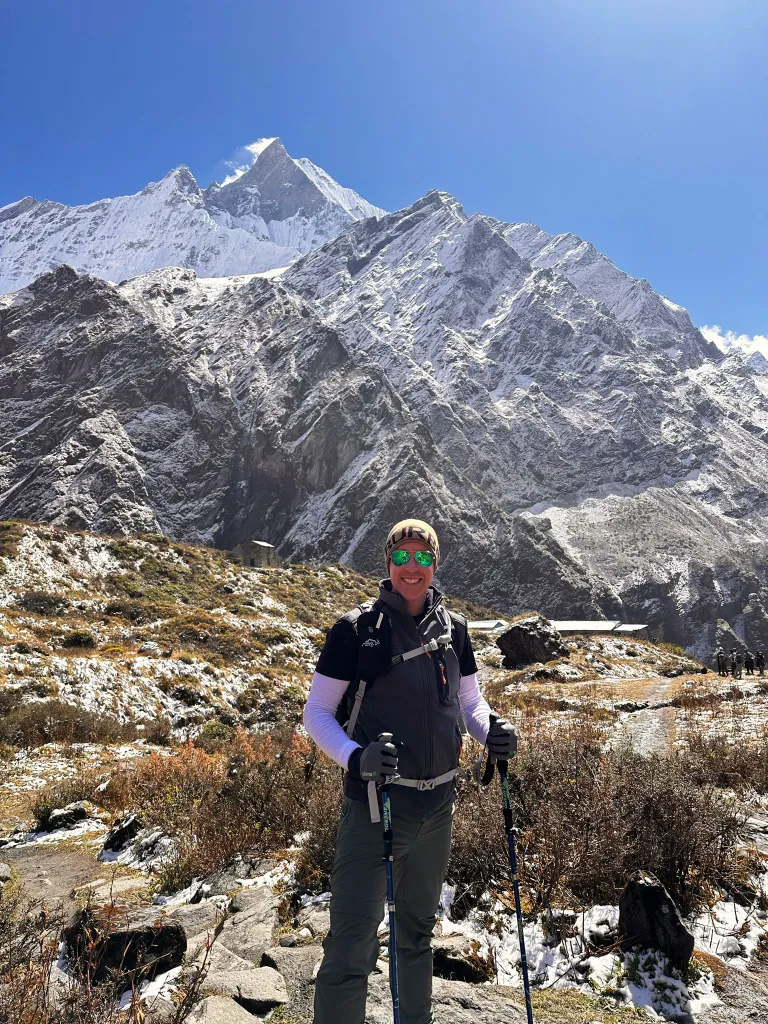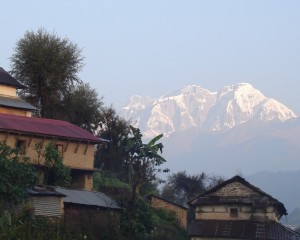Is the Annapurna Circuit Trek Safe?
Annapurna Circuit Trek is an appealing journey through the natural and cultural wonders in the lap of the Annapurna region. You walk past the subtropical landscape of the lower region to the desert-like landscape across the tropical landscape of the mid-region, crossing suspension bridges, tumbling waterfalls, and lush forests.
Throughout your two-week journey, you are greeted with alluring views of the majestic peaks of the Annapurna Massif (Annapurna I-IV), Dhaulagiri, Machhapuchhre, Manaslu, Tilicho Peak, Pisang Peak, Paungda Danda, Himchuli, Neelgiri, Tukuche, Gangapurna, Hiunchuli.
The trail is adorned with flapping shortens, spinning prayer wheels, and ancient monasteries that showcase Tibetan culture.
Annapurna Circuit Trek is a once-in-a-lifetime adventure that blends natural cuisine, cultural heritage, and spiritual awakening. While it is one of Nepal's classical trekking trails, many trekkers question its safety.
As a team that has been running trekking for over thirty years, we can say one thing for sure: the trail has a 90-95% success rate. Yet, some factors can influence the difficulty of the trek. Let's give you a quick insight into the Annapurna Circut Trek to help you plan your next adventure.
How safe is Annapurna Circuit?
The Annapurna Circuit Trek winds through the Tibetan-influenced valley and over the High Thorong La Pass into the desert-like Kaligandaki Valley. The fun fact about the trail is that it was once a key trade route to Tibet. Regardless, the trail has incredible side trips to make your journey even more rewarding if you are not rushed.
The undulating landscape of the Annapurna Circuit combines rugged paths, steep inclines, and rocky sections, taking you to an altitude above 5000m. But with good physical fitness and proper planning, the Annapurna Circuit Trek falls under one of the safest trails in Nepal.
What is the hardest part of the Annapurna Circuit?
The hardest part of the Annapurna Circuit is crossing the Thorong La Pass at an elevation of 5,416 meters. The high-altitude pass presents challenges due to the thin air that can cause altitude sickness. So, you are required to acclimatize properly before attempting the crossing. The ascent to Thorong La is steep and rocky, and you have to navigate difficult, slippery terrain, especially during certain seasons when weather conditions are unpredictable.
Likewise, the trek up to the pass is physically demanding, as you are expected to walk 5 to 8 hours. This cumulative fatigue can take a toll on both physical and mental stamina. Moreover, the harsh weather conditions, including cold temperatures and potential snowfall, can further complicate the crossing.
- The Annapurna Circuit Trek presents a variety of weather conditions that can hamper the trekking experience. The trail is better in spring and autumn to start the trekking. However, in the monsoon season and winter, the weather pattern is unpredictable, as you can face risks of heavy rain or snow.
- Altitude Sickness is another critical concern for trekkers as they ascend to higher elevations. The risk of altitude sickness increases above 3,000 meters, so you have to acclimatize properly by ascending gradually and including rest days in your itinerary. Symptoms such as headaches, nausea, and dizziness happen in this situation; if they occur, you need immediate descent to prevent severe complications.
- Trail conditions also pose challenges throughout the trek. The terrain includes steep ascents and descents in sections that may be rocky or prone to landslides, particularly after heavy rainfall. You must exercise caution when navigating these areas to avoid slips and falls.
Is Annapurna Circuit still worth it?
The first highlight of the trek is the journey through remarkable, diverse landscapes. You start from the low subtropical forest of Jagat and transform to the desert-like landscape of upper Mustang. You can witness the vibrant greenery and terraced rice paddies as you ascend the scenery transitions into semi-arid regions.
The high-altitude environments where icy mountain passes and glacial valleys give stunning views of towering peaks. Aside from that, the world's deepest gorge, Kali Gandaki Gorge, brings the adventure through the trail. The trail has diverse flora and fauna at different altitudes, bringing the best visual appeal.
Meanwhile, the terrain is decorated with an inscribed Mani wall, flying chorten, and a spinning prayer wheel that immerses you in its cultural beauty. Similarly, the local Gurungs, Thakalis, and Tibetans have unique customs and traditions. Their friendly demeanor and warm hospitality give insight into their way of life and will enrich your trek.
Muktinath is a religious landmark for both Hindu and Buddhist practices. Surrounded by the towering peaks of the Annapurna ranges, it creates unforgettable photographic opportunities and lasting memories.
Even after all the physical challenges, the Annapurna trail is an amazing journey one can embark on with good preparation.

What level of fitness is required for the Annapurna Circuit?
Beginner and experienced trekkers need good physical condition for a better trekking experience. When we say good physical condition, we mean both physical and mental health, impacting the trekking journey.
Physical Fitness
The two-week journey through the uneven land terrain requires your body to tackle these physical challenges. Start by taking the staircase regularly and then taking a long hike on long weekends. Then, include the proper strategy of strength training and cardio in your fitness routine. With an appropriate training routine, your body will be able to deal with the physical challenges of the Annapurna Trail. Moreover, the experience of short hiking or trekking routes in your nearby areas helps you a lot in your journey.
Mental Health
Mental health is a non-negotiable aspect of the travel journey. Travelers with a positive attitude can tackle the physical terrain. Meanwhile, unexpected weather changes can influence your itinerary. In such situations, your positive attitude can help you remain calm. To maintain good mental health for trekking, stay positive and try to explore the amazing natural wonders as rewards for better preparation for the trek.
Best Time To Trek Annapurna Circuit Trek
The best times to visit the Annapurna Circuit Trek are spring and autumn. Exploring the trail at these times may be feasible, as clear visibility, comfortable weather, and proper trail conditions reward.
Spring
The cold breeze is coming from the majestic peak, and the vibrant atmosphere of nature is transitioning into its best self. The time when flora and fauna are active, the days are long, and the sharp visibility of the towering peaks makes it ideal for trekking in the spring season.
Moreover, it is a festival of the local community, like Lhosar and Buddha Jayanti, which are appealing experiences of ancient culture wrapped in the arms of this remote region. But you have to face the rainfall in the late season that obstructs trail conditions and visibility.

Autumn
Clearing the sky after the heavy rainfall season, nature regains its beauty, and the weather becomes more comfortable. Similarly, the lively atmosphere and festive season along the trail make it even more exciting.
Many people are unaware that autumn is when the local community celebrates its biggest festivals, like Kumje, Dashain, and Tihar, which bring cultural beauty to your journey.
But the trekking season is at its peak, so you must book it in advance. The best way to tackle the crowd is to book the trek at the end of the season.
To wrap up, The Annapurna Circuit Trek is a remarkable adventure that offers breathtaking landscapes, cultural richness, and spiritual experiences. It is safe for those who come prepared.
With good physical fitness, proper planning, and the right gear, you can reduce risks and focus on enjoying the stunning landscapes and unique cultural experiences the trek offers. So, if you are ready for your next adventure in the Himalayas, contact Nepal Vision Trek.
FAQS






